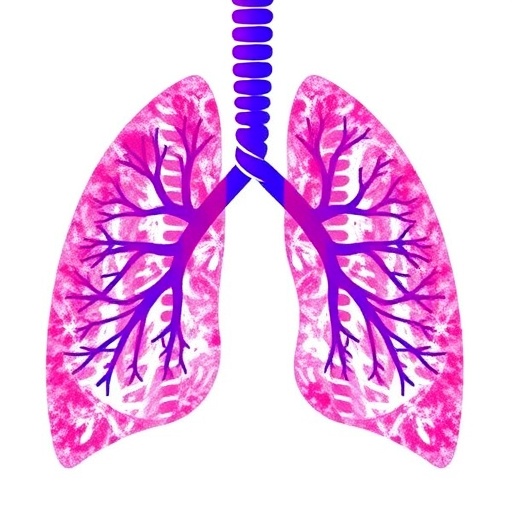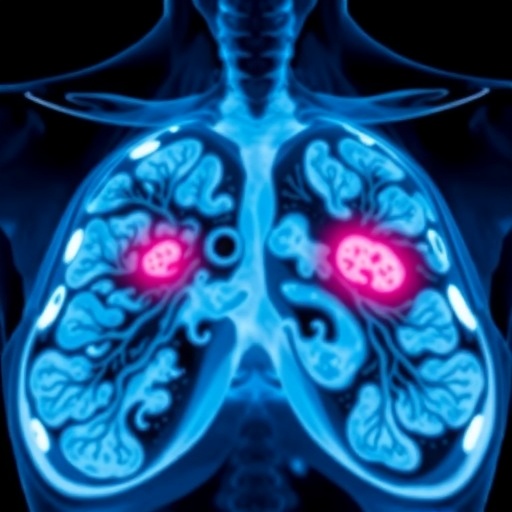In a groundbreaking longitudinal study published in BMC Cancer, researchers have unveiled the complex cellular and molecular dynamics that underline bladder cancer progression following Bacillus Calmette-Guérin (BCG) therapy. Non-muscle-invasive bladder cancer (NMIBC), despite being amenable to BCG treatment, notoriously recurs and progresses, posing a significant clinical challenge. This investigation, employing advanced single-nucleus RNA sequencing (snRNA-seq), sheds light on the often elusive tumor microenvironment (TME) alterations and therapeutic resistance mechanisms, potentially steering future therapeutic strategies.
The research team undertook an intricate analysis of tumor samples from nine NMIBC patients, including three pairs of samples taken both before treatment and upon disease progression. By sequencing over 58,000 nuclei, the study mapped out detailed cellular compositions and transcriptomic shifts within the TME. This technique allowed unprecedented resolution of cellular heterogeneity, identifying not only major cell types but also subtle subpopulations and their dynamic transcriptional profiles.
One of the most compelling findings was the pronounced interpatient heterogeneity among malignant cells. These cancer cells harbored distinct copy number alterations correlating with the clinical trajectory from treatment-naïve to advanced disease stages. Such genomic aberrations underscore the evolutionary plasticity of bladder tumors and their capacity to adapt under therapeutic pressures, highlighting the need for personalized approaches in managing NMIBC recurrence and progression.
Central to the disease advancement was the progressive amplification of Transforming Growth Factor-beta (TGF-β) signaling within the malignant cells and the surrounding stroma. TGF-β, a critical cytokine implicated in tumor growth, immune modulation, and extracellular matrix remodeling, appeared increasingly active as tumors evolved post-BCG therapy. This trend suggests that TGF-β may act as a master regulator of the TME remodeling that facilitates tumor escape from immune surveillance and treatment efficacy.
Beyond malignant cells, the study meticulously categorized various TME components, revealing distinct subtypes of immune and stromal cells contributing to tumor promotion. Notably, a subset of dendritic cells characterized by LAMP3 expression and a population of inflammatory cancer-associated fibroblasts (iCAFs) demonstrated unique transcriptional trajectories linked to disease progression. These specialized cells likely play instrumental roles in immune evasion and creation of a pro-tumorigenic niche, representing potential therapeutic targets.
The intricate cross-talk between cells within the tumor milieu was further clarified through comprehensive cell-cell interaction analyses. The researchers identified several ligand-receptor pairs that seemed pivotal in driving malignant behavior and poorer patient outcomes. Among them, the DSC2-DSG2 axis stood out due to its involvement in cell adhesion and signaling pathways that could enhance tumor invasiveness and resistance. Another critical interaction identified was between ENG (Endoglin) and BMPR2 (Bone Morphogenic Protein Receptor Type 2), molecules known to modulate angiogenesis and stromal responses, underscoring their potential as biomarkers or intervention points.
This robust analysis not only delineates the cellular ecosystem facilitating bladder cancer progression but also offers a compendium of candidate molecular targets for future drug development. Importantly, the study’s longitudinal design, comparing pre- and post-treatment states within the same patient, provides a dynamic perspective on tumor evolution and resistance mechanisms rather than static snapshots, which is a considerable advancement in cancer biology research.
While the findings generate promising hypotheses, the authors prudently acknowledge the necessity for validation in larger, independent cohorts to confirm the clinical utility of these candidate biomarkers and molecular pathways. Such validation is crucial before translation into clinical diagnostics or therapeutics, ensuring reproducibility and broader applicability across diverse patient populations.
Ultimately, this investigation redefines our understanding of NMIBC treatment failure, emphasizing the complexity of TME adaptations and the pivotal role of TGF-β-mediated signaling. These insights lay foundational knowledge that could inform the design of combination therapies incorporating TGF-β pathway inhibitors alongside BCG or other immunomodulatory agents to prevent disease progression and improve long-term patient outcomes.
The integration of single-nucleus RNA sequencing technology exemplifies the cutting-edge tools now available to oncologists and researchers, enabling dissection of tumor biology at an unparalleled resolution. It opens avenues for personalized medicine approaches by identifying which patients are likely to develop resistance and guiding targeted intervention based on their unique tumor microenvironment profiles.
Moreover, understanding the roles of specialized dendritic cells and fibroblast subtypes in the tumor milieu challenges conventional paradigms that primarily focus on malignant epithelial cells. Therapeutic strategies that modulate these accessory cells could enhance anti-tumor immunity and obstruct pro-tumoral stromal support mechanisms.
In the broader context of cancer research, these findings from bladder cancer reflect a growing appreciation for the intricate signaling networks and cellular interdependencies that contribute to treatment resistance. They reaffirm the necessity of multidimensional analyses that capture spatial, temporal, and molecular heterogeneity to devise more effective interventions.
The study’s extensive data sets and newly characterized ligand-receptor interactions are expected to catalyze further research into bladder cancer biology, potentially inspiring novel drug development pipelines, particularly targeting TGF-β signaling and tumor niche remodeling. This research thus marks a pivotal step towards circumventing one of the major hurdles in bladder cancer management — treatment failure and progression.
As we anticipate future studies expanding on these findings, the promise of integrating molecular profiling with clinical management becomes ever clearer. Patients suffering from recurrent NMIBC may, in time, benefit from therapies precisely tailored to disrupt the unique cellular ecosystems that sustain their tumors, dramatically improving survival and quality of life.
Through meticulous scientific innovation and comprehensive data integration, this study embodies the transformative potential of modern oncology research. As the field continues to unravel the molecular intricacies of cancer, such investigations will be indispensable in bridging the gap between laboratory insights and impactful clinical applications.
Subject of Research: Bladder cancer progression mechanisms and tumor microenvironment dynamics post-BCG therapy.
Article Title: TGF-β signaling and tumor microenvironment dynamics in bladder cancer progression post-BCG therapy: a longitudinal single-nucleus RNA-seq study.
Article References: Lee, SY., Lee, YH., Kim, TM. et al. TGF-β signaling and tumor microenvironment dynamics in bladder cancer progression post-BCG therapy: a longitudinal single-nucleus RNA-seq study. BMC Cancer 25, 1735 (2025). https://doi.org/10.1186/s12885-025-15079-8
Image Credits: Scienmag.com
DOI: 10 November 2025
Tags: Bacillus Calmette-Guérin therapy effectscellular heterogeneity in tumorsgenomic alterations in cancer cellsinterpatient heterogeneity in bladder tumorslongitudinal studies in cancer researchnon-muscle-invasive bladder cancer challengespersonalized treatment strategies for bladder cancersingle-nucleus RNA sequencing applicationsTGF-β signaling in bladder cancertherapeutic resistance mechanisms in NMIBCtranscriptomic analysis of cancer progressiontumor microenvironment alterations




